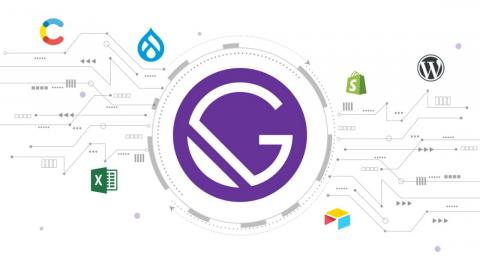
The frameworks and technologies to create and develop web pages and mobile applications are constantly updated, in addition to sharing similar functions and tools to facilitate their use by developers, two of them are GatsbyJS and ReactJS.
These open-source technologies are two of the most used in the process of creating and developing web pages, in addition to having an extensive library and community of experts around the world, but is it necessary to handle ReactJS perfectly to be able to work with GatsbyJS?
What is ReactJS: definition and characteristics of this technology
ReactJS is an open source JavaScript-based technology that allows you to quickly and efficiently build user interfaces by including Java files in your HTML. It can also be described as a Java library that you can use to create a different user interface through different components that help build and define the structure of your application.
Among the main features that make ReactJS one of the most popular frontend technologies, the following stand out:
- It offers the ability to develop new features without the need to rewrite existing code.
- React can also render from the server using Node, as well as power mobile apps using React Native.
- React components implement a method called render() that receives input data and returns what to display.
- React allows you to interact with other libraries and frameworks.
Among frontend developers, ReactJS is one of the most popular technologies since it allows them to create attractive user interfaces with great visual impact for users, allowing the project to be successful and the website to increase its visits.
What is Gatsby.JS about?
Gatsby.JS is a tool that can be used to create static sites that are progressive web applications, following the latest web standards and optimized for high performance. It makes use of the latest and most popular technologies, including ReactJS, Webpack, GraphQL, modern ES6 + JavaScript, and CSS.
Among the most striking features of Gatsby.JS we see:
- Allows you to create unique pages based on templates. Create a shared page layout to include elements such as headers and footers.
- Migration of images, videos, GIFs and other media to your site.
- Their ecosystem offers everything from CMS integrations to image optimizations.
- Pull content and data from wherever you live (a CMS, the file system, a spreadsheet, a database) into Gatsby using plugins.
- Gatsby provides a wealth of tools to get your performance fast right out of the box.
Can Gatsby.JS be used without any knowledge of ReactJS?
Because it is a technology based on ReactJS, it is necessary to learn how to use this popular frontend tool to be able to handle Gatsby.JS perfectly, taking advantage of all its functions and thus be able to create an optimal project that matches the new trends in technology, in addition to meet user demands.
Gatsby.js or Next.js: which is the best React framework
We already know very well what you can do with Gatsby.js, but could Next.js be an ideal option?
According to their official documentation, "Next.js is a flexible React framework that gives you the basics for building fast web applications. Next.js handles the necessary tools and configuration for React and provides additional structure, features, and optimizations for your application" .
Both frameworks are similar but differ in key aspects, such as data handling. Next.js allows developers to handle the data however they see fit for the project. Gatsby.js, on the other hand, only allows you one way to handle it and get it.
In the page rendering part, Next.JS Progressive Web Apps render pages through the use of SSR. Gatsby.js for its part, generates HTML pages during its construction time.
At Rootstack we have a team of experts in both technologies, they can make use of all their functions to create dynamic web pages that are above the competition. Do not hesitate any longer and start that project you have in mind; we will work by your side to achieve it.
We recommend you on video


